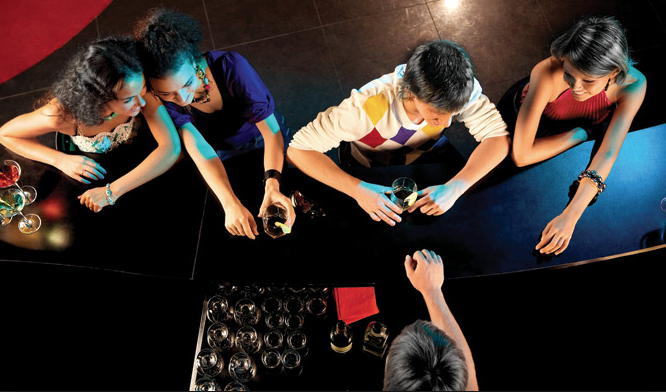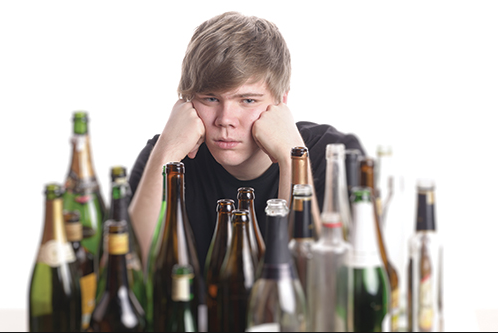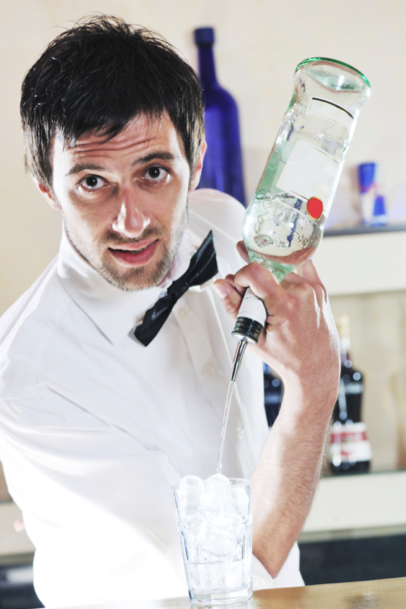Our last post discussed different risks connected to minors getting alcohol in your business. Today, let’s look at some ways to reduce those risks.
This blog is especially for:
- Restaurants with minors
- Bars, clubs, and restaurants that morph into clubs that limit access to 21 and older
If your business is a late-night venue hosting 18 and older events, you’ll learn a lot by reading this. However, your business will need extra policies and procedures to responsibly run promotions—and this post doesn’t address those.
I am listing the recommendations below loosely in the order of their value in reducing risk:
Staff Alcohol Training
Before you start thinking, “He’s suggesting this first because he offers the training,” hear me out. Unlike the other recommendations, staff alcohol training can significantly reduce your risk of serving to a minor. But also, it can make you eligible for a mitigated (reduced) ABC penalty if, despite the training, your trained staff still sells to a minor.
Rule 144 of the California Code of Regulations, which specifies the penalty guidelines and penalty schedule for the ABC, states: “Mitigating factors may include, but are not limited to . . . documented training of licensee and employees.”
This is why, after training, I send training certificates to the client and email a Training Record to the client’s local ABC office.
Be sure any alcohol training course you use focuses on:
- The Minor Decoy program, other specific ABC enforcement actions, and how to avoid violations.
- How to inspect identifications, using real and phony identifications (yes, I have phony IDs for training, yes, technically confiscated IDs need to be turned into the police—I’m a rebel). Remember, if you sell to a minor and then that minor is injured, or injures another, your business is exposed to litigation under California dram shop law.
It’s important to mention: if your business is mandated (by the ABC, the city, or your lease) to train staff in an alcohol course, yet you do not, you’re rolling the dice. Let’s imagine a couple scenarios:
- Your ABC license already requires alcohol training and then the ABC catches the business selling to a minor. If the ABC investigation reveals you did not train your staff in accordance with the condition on your license, your business is now exposed to administrative ABC penalties for both issues—violating license conditions and sale to a minor. And if the city required training, then the city can take action against your permits, as well.
- A much more likely scenario: your city permit (or lease) requires alcohol training of your staff (often within 3,6, or 9 months of hire). Your business is sued. The lawsuit claims the over-service of alcohol (drunkenness) contributed to the cause of action. The civil complaint will be littered with allegations of your negligence and your failure to meet your legal duty of care. And that’s before the ensuing investigation reveals the staff was not trained in responsible alcohol service, in direct violation with your conditions to operate. Imagine the negative position your insurance carrier is now in, and that you’re in. The higher a claim settlement the higher your increase in general liability insurance. I’ve seen one $320,000 insurance claim settlement result in an $80,000 annual increase in general liability insurance to the business––and that was for an adult whose shoulder was wrenched. Keep in mind that a claim stays on your record for 5 years. If you are sued, judgments and settlements can be in the millions of dollars.
I strongly recommend training your staff in a robust alcohol course. Complete the training in accordance with any mandate placed on your business. If not mandated, do the smart thing and train new staff on a regular schedule (every 3, 6, 9 or 12 months).
For the record, when I owned the Shark Club, and after I saw the light, I did train my staff in alcohol courses (a decade before creating my own series of workshops). I used TIPs, ABC LEAD, and a course presented by Project Path. Those courses were fine, but failed to directly address the topics and solutions most important to business owners.
Before-You-Serve Alcohol Policy and Procedure
Would you permit a bartender to pour drinks before you had evidence of their competence? Probably not, even though the downside is slow service or a poorly built cocktail. Why let someone sell alcohol before you know they understand basic ABC laws and law enforcement actions? The downside is so….down, as in getting stung in the minor decoy program, or selling to a minor who is then injured and cripples the business with a lawsuit, or over-service that contributes to a lawsuit claiming negligence.
I first created a Before-You-Serve Alcohol policy and procedure when I owned the Shark Club. No one was allowed to sell alcohol on their own until competing the Before-You-Serve Alcohol policy and procedure. The training acted as a bridge to the later, more formalized (and ABC recognized) alcohol course months later.
Recently, as a consultant and trainer, I’ve started to provide my clients with a Before-You-Serve Alcohol policy and procedure, customized to their business profile (without charging extra—I want my clients to be protected). The document includes several attached procedures, like a Checking IDs procedure. Collectively, these documents ensure new team members are armed with the knowledge and empowered with the motivation to sell alcohol in a manner that protects the business and the server. This document is provided after the training.
New Employee Checklist
The checklist ensures new hires complete the needed paperwork and training. If your business has documented policies and procedures, the checklist completion ensures the new hire receives that training. If you’re business is not inclined to create formalized policies and procedures, the checklist can remind a trainer of those topics that they need to discuss with new hires (e.g., ABC laws, Minor Decoy Program, and how to check IDs,).
Michele Stumpe is an attorney who has represented the hospitality industry for over 20 years. Her article, Three Critical Steps to Minimizing Alcohol Liability Risk, was published in Restaurant Hospitality (a member login site). Her big three steps (written policies, high quality alcohol training, and proactive monitoring) can be read in this link to her abridged article:
http://hubhospitality.ca/blog/2016/04/18/how-minimize-alcohol-liability-risk
Let me know if you want an emailed PDF of her complete article.
Secret Shoppers
We’ve already shared plenty on what spotters can do for you. Suffice to say, we agree with Michele Stumpe. Spotters can identify a leak before it sinks your business. Is your staff carding youthful-looking customers? Is your staff serving alcohol to someone who’s obviously intoxicated? Is your staff following house policies?
Point-of-Sale System – Minimum Age Reminder
Often those employees who fail to pass muster during a Minor Decoy sting operation actually looked at the undercover minor’s driver’s license, but failed to correctly do the math. If you have an opening checklist, consider including the daily posting at each POS system the month, day of month, and year needed on a customer’s driver’s license for a customer to be 21.
Interview Process
The interview is the best time to start stressing the importance of carding customers and not serving minors, connecting the dots between those practices, and protecting the ABC license, the business, and the customer.
By the time orientation and training is done, the new hire should understand not serving alcohol to minors is vital.
The Gatekeeper – Security Working Entrance
I could go on and on about how important your ID checker is (and I do in trainings). For those who have someone at the door checking IDs, make sure they have the training, personality, and integrity to do that very hard job.
I learned the hard way that it’s generally better to have someone on the older side checking IDs at the entrance. If you have a minor checking ID’s you can be sure all their minor friends will be pressuring your gatekeeper to let them in.
Manager Audit
If you limit entrance to 21 and over, and you’re concerned there’s a leak in your security at the door or perhaps customers are sneaking in an emergency entrance, consider asking your floor manager to card the five youngest-looking customers inside the business. You might ask the floor manager to record the names of those carded customers and turn it in.
I hope these ideas inspire you to take actions that help protect your business, the public, and your peace of mind.


